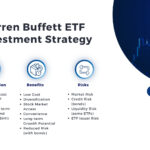In the realm of investment opportunities, few companies draw as much attention as Tesla Stock. Known for its innovative strides in the electric vehicle (EV) industry, Tesla has become a prominent name not only in automotive circles but also in the investment landscape. As savvy investors seek to understand the potential growth and volatility of Tesla stock, it becomes imperative to delve deeper into its performance, market trends, and influential factors.
Contents
Tesla Stock Historical Performance
Tesla stock performance is a tale of remarkable ascension intertwined with bouts of volatility. The company’s initial public offering (IPO) in 2010 marked the beginning of its stock market journey. Since then, Tesla’s stock has experienced substantial fluctuations, influenced by numerous factors including production numbers, delivery targets, financial reports, and global market trends in the EV sector.
Market Influence and Factors
Understanding the intricacies of Tesla’s stock performance demands a grasp of the multiple elements that influence it. One of the primary drivers of Tesla’s stock price is innovation. The company’s continuous quest to develop cutting-edge technology in the EV space, coupled with announcements about new products and advancements, significantly impacts investor sentiment.
Additionally, macroeconomic factors such as regulatory changes and government incentives for electric vehicles can directly affect Tesla’s stock performance. Notably, the global push towards sustainability and green initiatives has elevated the demand for electric vehicles, directly benefiting companies like Tesla.
Financial Metrics
Analyzing Tesla’s financials is crucial in gauging its stock performance. Key indicators such as revenue growth, profit margins, and cash flow provide valuable insights into the company’s health and future prospects. Investors closely monitor quarterly earnings reports and forward-looking guidance provided by Tesla to assess its growth trajectory.
Competitive Landscape
While Tesla stands as a pioneer in the EV industry, it faces competition from both traditional automakers venturing into electric vehicles and emerging startups. Understanding the competitive landscape, including factors such as production capacity, technological advancements, and market positioning, is pivotal in evaluating Tesla’s long-term stock performance.
Investor Sentiment and Market Speculation
The stock market is not solely driven by financial metrics and company performance. Investor sentiment and market speculation play a significant role in influencing stock prices. Media coverage, social media discussions, and analyst recommendations can impact market sentiment, leading to fluctuations in Tesla’s stock price.
Future Outlook
Predicting the trajectory of Tesla’s stock performance requires a comprehensive analysis of various elements. Factors such as upcoming product launches, expansion plans, technological advancements, and global market shifts towards sustainable solutions all contribute to shaping the future outlook of Tesla’s stock.
In the dynamic realm of investment opportunities, few companies draw as much attention as Tesla. Renowned for its pioneering strides in the electric vehicle (EV) industry, Tesla has solidified its reputation not only in automotive circles but also in the investment landscape. As astute investors seek to comprehend the potential growth and volatility of Tesla stock, it becomes crucial to delve deeper into its performance, market trends, and influential factors. This article provides a comprehensive analysis of Tesla stock performance in 2024, exploring historical trends, market influences, financial metrics, competitive positioning, investor sentiment, and future prospects.
Historical Performance
The Journey from IPO to 2024
Tesla’s journey on the stock market began with its initial public offering (IPO) in June 2010, when shares were priced at $17. Since then, Tesla’s stock has experienced a remarkable ascent, marked by significant fluctuations. The company’s growth trajectory has been influenced by numerous factors, including production milestones, delivery targets, financial reports, and broader market trends within the EV sector.
Key Milestones and Market Reactions
Over the years, Tesla has hit several key milestones that have significantly impacted its stock performance. The launch of the Model S in 2012, the introduction of the Model 3 in 2017, and the rollout of the Model Y in 2020 were pivotal moments that drove investor interest and market optimism. Each of these launches was accompanied by substantial spikes in stock price, reflecting investor confidence in Tesla’s ability to innovate and deliver high-quality electric vehicles.
However, the stock has also experienced periods of volatility, often driven by production challenges, regulatory scrutiny, and market speculation. For example, delays in Model 3 production in 2017 led to temporary dips in stock price, while announcements about potential battery innovations or autonomous driving capabilities have often sparked significant upticks.
Market Influence and Factors
Innovation and Technological Advancements
One of the primary drivers of Tesla’s stock price is its continuous quest for innovation. Tesla’s commitment to developing cutting-edge technology in the EV space, from advanced battery technology to full self-driving (FSD) capabilities, significantly impacts investor sentiment. In 2024, the anticipated release of new battery technologies and enhancements to FSD features are expected to be major catalysts for stock performance.
Macroeconomic Factors
Macroeconomic factors, such as regulatory changes and government incentives for electric vehicles, play a crucial role in Tesla’s stock performance. The global push towards sustainability and green initiatives has elevated the demand for electric vehicles, directly benefiting companies like Tesla. Government policies favoring EV adoption, including subsidies and tax incentives, are expected to continue bolstering Tesla’s market position and stock performance in 2024.
Global Market Trends
Global market trends also influence Tesla’s stock performance. The increasing shift towards renewable energy and sustainable transportation solutions has created a favorable market environment for Tesla. The company’s expansion into new markets, particularly in Asia and Europe, has been met with positive investor response. In 2024, Tesla’s continued growth in these regions, along with its efforts to establish new manufacturing facilities, is likely to sustain its upward stock trajectory.
Financial Metrics
Revenue Growth and Profitability
Analyzing Tesla’s financials is crucial for understanding its stock performance. Key indicators such as revenue growth, profit margins, and cash flow provide valuable insights into the company’s health and future prospects. In recent years, Tesla has demonstrated robust revenue growth, driven by increasing vehicle deliveries and expansion into new markets.
In 2024, Tesla’s revenue is expected to continue its upward trend, supported by strong demand for its vehicles and energy products. Investors closely monitor Tesla’s quarterly earnings reports and forward-looking guidance to assess its growth trajectory. Maintaining healthy profit margins amidst rising production costs and supply chain challenges will be critical for sustaining investor confidence.
Cash Flow and Capital Expenditure
Tesla’s cash flow and capital expenditure (CapEx) are also important metrics to consider. The company has made substantial investments in expanding its production capacity, including the construction of Gigafactories in Texas, Germany, and China. These investments are expected to enhance Tesla’s manufacturing capabilities and reduce production costs in the long term.
In 2024, managing cash flow effectively while continuing to invest in growth opportunities will be crucial for Tesla. Investors will be looking for signs of efficient capital allocation and the ability to generate positive free cash flow, which can support further expansion and innovation initiatives.
Competitive Landscape
Traditional Automakers and Emerging Startups
While Tesla stands as a pioneer in the EV industry, it faces increasing competition from both traditional automakers venturing into electric vehicles and emerging startups. Companies like General Motors, Ford, and Volkswagen have made significant strides in developing their EV lineups, posing a competitive threat to Tesla. Additionally, startups such as Rivian and Lucid Motors are gaining traction with innovative electric vehicle offerings.
Production Capacity and Market Positioning
Understanding the competitive landscape requires evaluating factors such as production capacity, technological advancements, and market positioning. Tesla’s ability to scale production efficiently and maintain its technological edge will be pivotal in sustaining its competitive advantage. In 2024, Tesla’s continued focus on innovation, combined with its established brand presence, is expected to help it navigate the competitive pressures.
Strategic Partnerships and Collaborations
Strategic partnerships and collaborations are another critical aspect of Tesla’s competitive strategy. Collaborations with battery suppliers, technology firms, and even other automakers can enhance Tesla’s capabilities and market reach. In 2024, potential partnerships aimed at advancing battery technology, autonomous driving, and energy solutions could provide a significant boost to Tesla’s stock performance.
Investor Sentiment and Market Speculation
Media Coverage and Social Media Influence
Investor sentiment and market speculation play a significant role in influencing Tesla’s stock price. Media coverage, social media discussions, and analyst recommendations can impact market sentiment, leading to fluctuations in Tesla’s stock price. Tesla’s CEO, Elon Musk, is particularly influential in shaping investor perceptions through his social media presence and public statements.
Analyst Recommendations
Analyst recommendations and ratings also impact Tesla’s stock performance. Positive ratings and price target upgrades from influential analysts can drive stock prices higher, while downgrades and negative assessments can have the opposite effect. In 2024, investors will continue to pay close attention to analyst reports and recommendations as they navigate Tesla’s dynamic stock landscape.
Market Speculation
Market speculation, driven by rumors and unverified information, can also lead to short-term volatility in Tesla’s stock price. Speculation about potential new product launches, technological breakthroughs, or changes in company strategy can create significant market movements. Investors must exercise caution and rely on credible sources of information when making investment decisions.
Future Outlook
Upcoming Product Launches
Predicting the trajectory of Tesla’s stock performance requires a comprehensive analysis of various elements, including upcoming product launches. In 2024, Tesla is expected to introduce new models and variants, including updates to the Model S and Model X, as well as potential new vehicle segments. These launches are likely to generate significant market interest and impact stock performance.
Expansion Plans
Tesla’s expansion plans, particularly in terms of manufacturing and market presence, will be critical in shaping its future outlook. The construction and ramp-up of new Gigafactories in strategic locations are expected to enhance production capacity and reduce costs. Additionally, expanding into new markets and increasing sales in existing regions will be key drivers of growth.
Technological Advancements
Technological advancements, particularly in battery technology and autonomous driving, will play a crucial role in Tesla’s future success. Breakthroughs in battery efficiency, energy density, and charging speed can enhance Tesla’s competitive edge and attract more consumers to its vehicles. Similarly, advancements in autonomous driving technology can open up new revenue streams and business opportunities.
Global Market Shifts
Global market shifts towards sustainable solutions and renewable energy will continue to benefit Tesla. The increasing adoption of electric vehicles, supported by government policies and consumer preferences, creates a favorable market environment for Tesla’s growth. In 2024, monitoring global market trends and regulatory developments will be essential for investors to assess Tesla’s long-term prospects.
Conclusion
Understanding Tesla’s stock performance in 2024 involves a multifaceted analysis encompassing historical trends, market influences, financial metrics, competitive positioning, investor sentiment, and future prospects. Tesla’s journey from its IPO to becoming a leading player in the EV industry has been marked by innovation, strategic expansion, and navigating competitive pressures.
As the EV industry continues to evolve and Tesla remains at the forefront of technological advancements, monitoring these factors becomes imperative for investors aiming to navigate the dynamic landscape of stock markets. Tesla’s ability to sustain revenue growth, manage production efficiently, and maintain its technological edge will be critical in determining its stock performance in 2024.
For investors seeking to understand Tesla’s stock dynamics, staying informed about market trends, financial metrics, competitive developments, and investor sentiment is crucial. By comprehensively analyzing these elements, investors can make more informed decisions and potentially capitalize on the opportunities presented by Tesla’s ongoing journey in the electric vehicle revolution.








Janelle Bruce
Emerie Webb
Keith Mccullough
Madelyn Howell